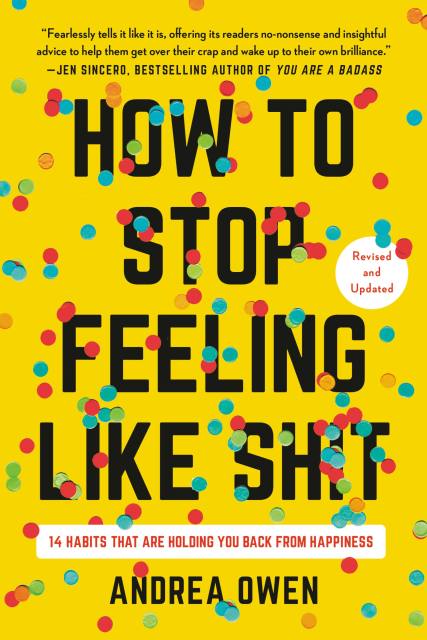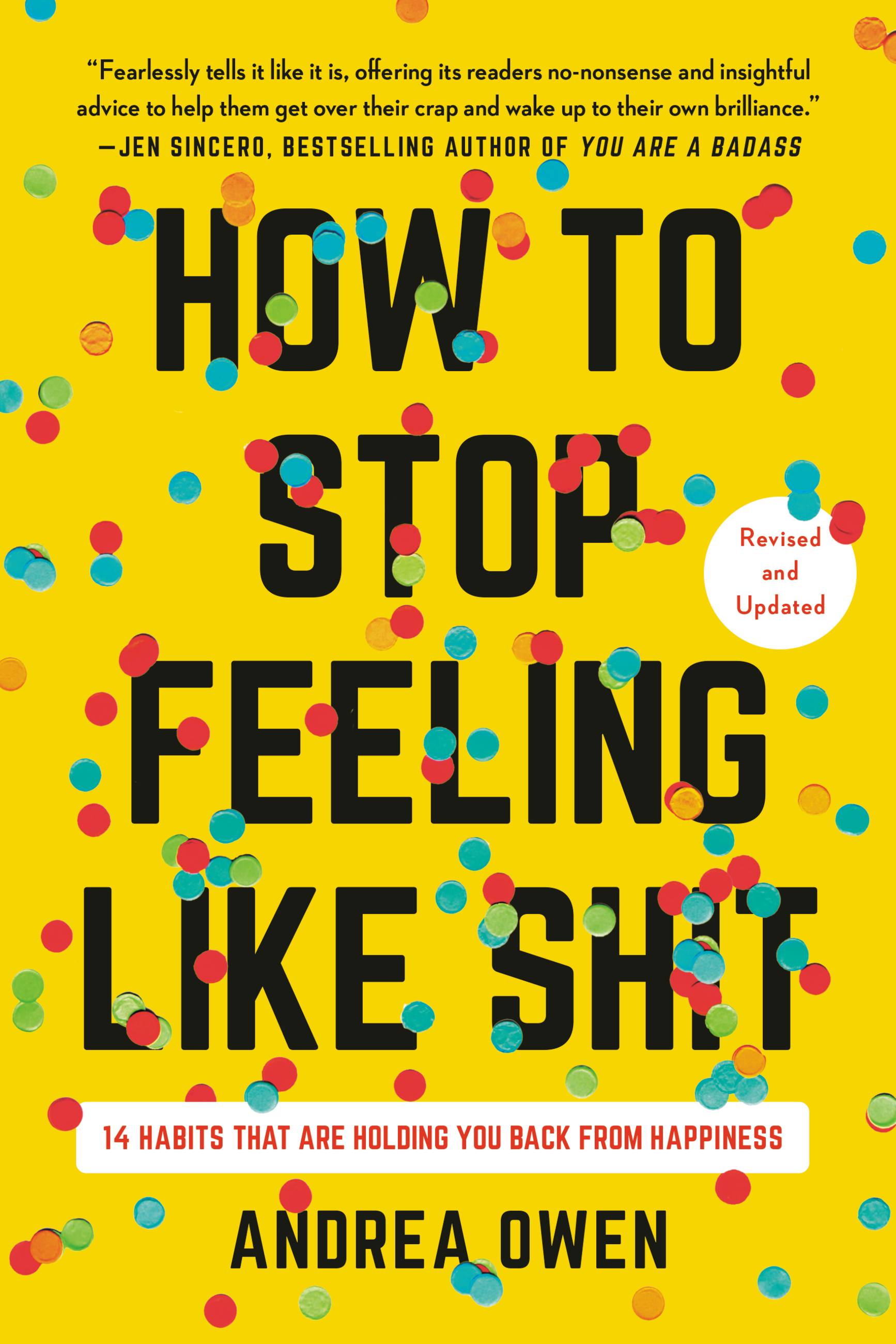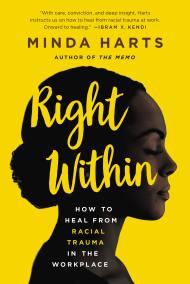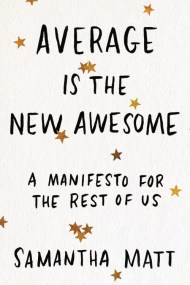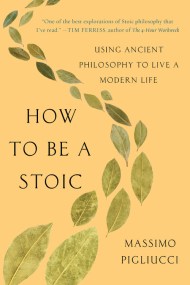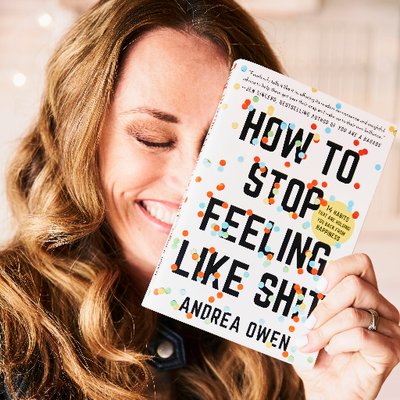Promotion
Shop now and save 20% on your back-to-school purchases & get free shipping on orders $45+ Use code: SCHOOL24
How to Stop Feeling Like Sh*t
14 Habits that Are Holding You Back from Happiness
Contributors
By Andrea Owen
Formats and Prices
Price
$11.99Price
$15.99 CADFormat
Format:
- ebook $11.99 $15.99 CAD
- Audiobook Download (Unabridged) $24.99
- Trade Paperback (Revised) $17.99 $22.99 CAD
This item is a preorder. Your payment method will be charged immediately, and the product is expected to ship on or around January 2, 2018. This date is subject to change due to shipping delays beyond our control.
Also available from:
How to Stop Feeling Like Sh*t is a straight-shooting approach to self-improvement for women, one that offers frank truth-telling about the most common self-destructive behaviors women tend to engage in. Andrea Owen — a nationally sought-after life coach — crystallizes what's behind several invisible, undermining habits, from catastrophizing and people-pleasing, to listening to the imposter complex or to one’s inner critic. Powerfully on-the-mark, the chapters are short and digestible, nicely bypassing weighty examinations in favor of punch-points of awareness. Her book kicks women's gears out of autopilot and empowers them to create happier, more fulfilling lives.
-
"Fearlessly tells it like it is, offering its readers no-nonsense and insightful advice to help them get over their crap and wake up to their own brilliance."Jen Sincero, bestselling author of You Are a Badass
-
"Andrea Owen [is] an expert at calling bullshit on behaviors and thinking that keep women stuck, unfulfilled, and unhappy . . . How to Stop Feeling Like Sh*t delivers in a powerful way, and women everywhere will be thanking Andrea for changing their lives!"Debbie Reber, New York Times-bestselling author of Differently Wired and Doable
-
"I found myself nodding along as I was reading, knowing that I too have some of "The Complications" within, but even more excited to know that there is a solution. A solution that's tangible and doable. I can't wait to recommend How To Stop Feeling Like Sh*t to all my girlfriends!"Rachel DeAlto, author of Relatable and Flirt Fearlessly
-
"Andrea Owen has done it again with her straight-shooting wisdom from her heart. She calls out the most common behaviors that keep smart and capable women stressed out and living with expectation hangovers!"Christine Hassler, author of Expectation Hangover
-
"After reading How to Stop Feeling Like Sh*t, I stopped feeling like shit! I think this book is a great read for anyone who is looking to accept the joy that already exists in their lives, live life according to their values, and to stop catastrophizing."Dr. Eris Huemer, star of Bravo's LA Shrinks and author of The Break-Up Emergency
- On Sale
- Jan 2, 2018
- Page Count
- 224 pages
- Publisher
- Seal Press
- ISBN-13
- 9781580056809
Newsletter Signup
By clicking ‘Sign Up,’ I acknowledge that I have read and agree to Hachette Book Group’s Privacy Policy and Terms of Use
